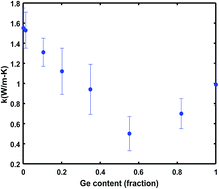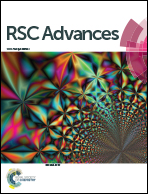Sub-amorphous thermal conductivity in amorphous heterogeneous nanocomposites
Abstract
Pure amorphous solids are traditionally considered to set the lower bound of thermal conductivity due to their disordered atomic structure that impedes vibrational energy transport. However, the lower limits for thermal conductivity in heterogeneous amorphous solids and the physical mechanisms underlying these limits remain unclear. Here, we use equilibrium molecular dynamics to show that an amorphous SiGe nanocomposite can possess thermal conductivity substantially lower than those of the amorphous Si and Ge constituents. Normal mode analysis indicates that the presence of the Ge inclusion localizes vibrational modes with frequency above the Ge cutoff in the Si host, drastically reducing their ability to transport heat. This observation suggests a general route to achieve exceptionally low thermal conductivity in fully dense solids by restricting the vibrational density of states available for transport in heterogeneous amorphous nanocomposites.


 Please wait while we load your content...
Please wait while we load your content...